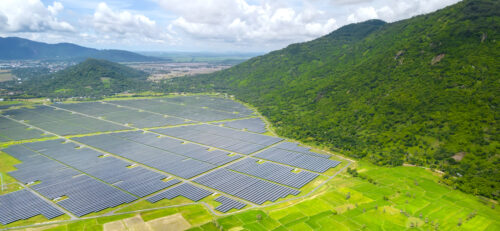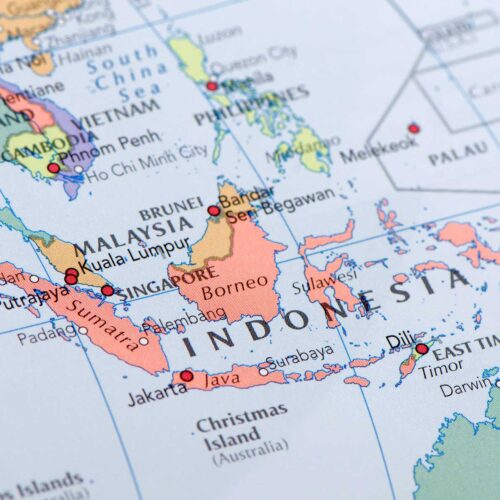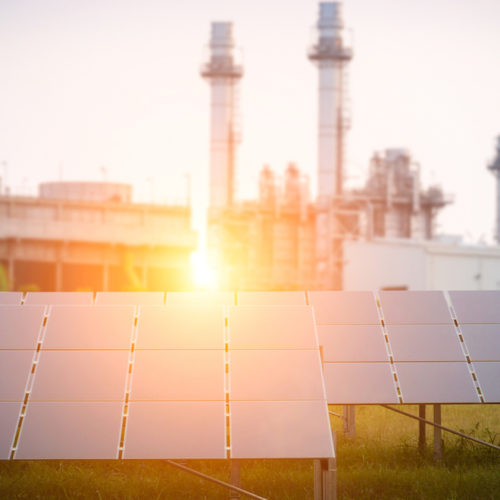
JETPs 101: Helping Emerging Economies Go from Coal to Clean
How Just Energy Transition Partnerships can help coal-dependent developing nations in their energy transition.
As the world moves to transition off fossil fuels, coal-dependent emerging economies have a challenging road ahead. They must decommission coal plants, transition to clean energy, and train workers and provide new economic opportunities in affected communities. This huge undertaking needs a lot of capital — which calls for looking beyond traditional financing methods.
Take Indonesia for example. This Southeast Asian country is the world’s fourth most populous, and one of the largest consumers and exporters of coal. When it pledged to cut its use of fossil fuels and speed up its transition to renewables, the United States, Japan, other wealthy nations, and private financial institutions stepped up to provide $20 billion in climate finance. This was done through a financing mechanism called a Just Energy Transition Partnership (JETP).
What Is a JETP?
A JETP is an innovative approach of international cooperation to accelerate country-led energy transition. The JETP model focuses on expanding access to both public and private finance to support critical and catalytic energy system investment needs. The funds come from a group of international countries called the International Partner Group (IPG) and private financial institutions. For instance, in the Indonesia deal, the first half of the funding came from the United States, Japan, Canada, Denmark, the European Union, Germany, France, Norway, Italy, and the United Kingdom. The remaining $10 billion is coming from private financial institutions that are part of the Glasgow Financial Alliance for Net Zero.
How Did JETPs Come About?
The JETP model was first announced at the COP26 climate summit in Glasgow in 2021. France, Germany, the United Kingdom, the United States, and the European Union partnered with South Africa for the first JETP. The countries agreed to provide $8.5 million to support coal emissions reductions and clean infrastructure for the African country. At the G20 summit in Bali in 2022, the Indonesia JETP was announced. While the latest JETP is with Vietnam, deals are also in the works for JETPs for India and Senegal.
What Are the Challenges?
However, a lot of behind-the-scenes work takes place before a JETP is finalized. They require a lot of collaboration and negotiating. The Indonesia JETP for example, took more than a year of working with different agencies. “There are many actors that need to collaborate,” says Rizky Fauzianto, an RMI manager who provided support to Indonesian and international stakeholders developing the Indonesian JETP. “In Indonesia we have the Coordinating Ministry for Maritime and Investment Affairs, who is coordinating across multiple government entities, but also involved are the Ministry of Energy and Mineral Resources on energy planning, the Ministry of Finance on country financial platform setup, the national utility on power sector planning, the state-owned financial institution as country financial platform manager, and more. It takes time to understand the landscape and to engage with all the different stakeholders.”
The other big challenge is what Koben Calhoun, an RMI principal who helped support the Indonesia JETP, has highlighted as a “chicken or the egg challenge.” The JETP country is interested in better understanding the amount and type of funding that is being offered by the IPG (grants, loans, debt guarantees, etc.) to decide on proposed projects to be presented in the JETP investment plan. While the IPG is requesting additional details on the proposed projects that will inform which sources of funding can be mobilized. “This is an ongoing and time-intensive process that requires detailed discussions, sharing of information, and ultimately agreement on projects,” says Fauzianto.
Addressing the J in the JETP
A JETP, like its name implies, is focused on a “just” transition. But what exactly does that mean? “The just transition is country and context specific. Country leaders should define the approach to developing just transition plans and to ensure inclusive and transparent processes are put in place to engage stakeholders and communities,” says Calhoun.
There are formal groups that have been set up in each country to address just transition issues. The Indonesian government established a just transition working group to ensure the energy transition does not negatively affect coal communities. “We have 250,000 people in Indonesia working in the coal mining sector,” says Fauzianto. “If we close down the coal power plants and coal mines, we have to ensure that these communities get some financial help. For us, that’s what a just transition means.”
The Long View
Some people are skeptical about the actual mobilization of the money — if, when, and how that is going to happen. There is a perception, rightly deserved, of developed countries and associated institutions not delivering on their financial commitments. But others are optimistic about the opportunities that JETPs provide. The three countries that now have JETPs have ratcheted up national climate ambitions and that, says Calhoun, is a huge win. “As a next step, we need to see policy and planning documents in each of the countries that align with those targets and outline the key levers for implementation,” he notes.
We can also think of a JETP as an interim step to develop and define a new model for advancing country-level climate action and the financial support needed to advance that climate ambition. JETPs might be what we need right now to try and unlock some aspects of the system and give support at a critical time for enhanced climate ambition. They can also help to evolve the way in which climate finance can be structured and mobilized to support a country’s energy transition.
A People-Centric Approach
JETPs have the potential to make a large impact in addressing the energy transition in emerging economies. But designing and implementing JETPs is complex and challenging. What is critical to remember, is that JETPs need to be people-centric. “The energy transition is underway,” says Calhoun. “The question is where, when, how quickly, and who’s going to be most affected? Beyond emissions reductions and economic development, we need to ensure governments put in place a people-centric approach to achieve a well-managed transition. We need to make sure that it’s going to work for people, for all people.”
We need to ensure governments put in place a people-centric approach to achieve a well-managed transition. We need to make sure that it’s going to work for people, for all people.
As far as the Indonesia JETP goes, Fauzianto is hopeful. “This is like a marathon race, not a sprint. In the short term, there’s a lot that still needs to be done; but in the long term, I’m optimistic that this will succeed.”

